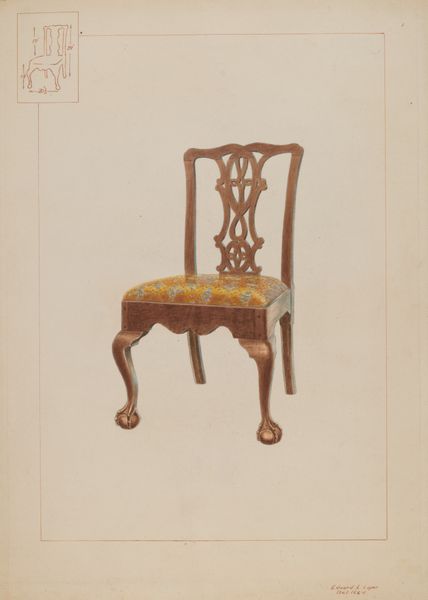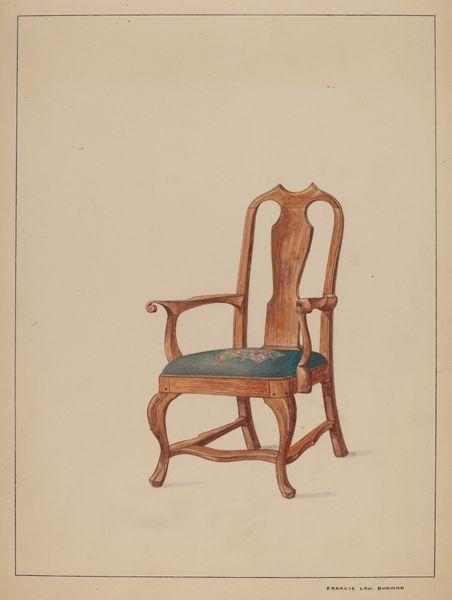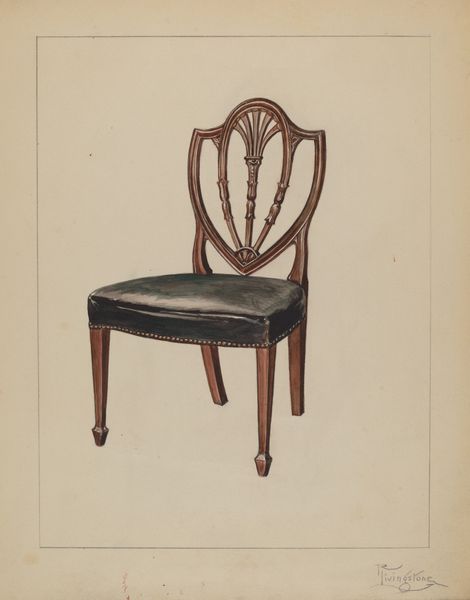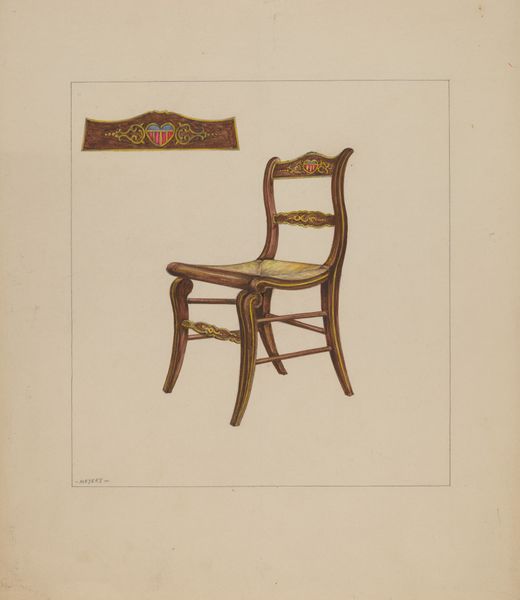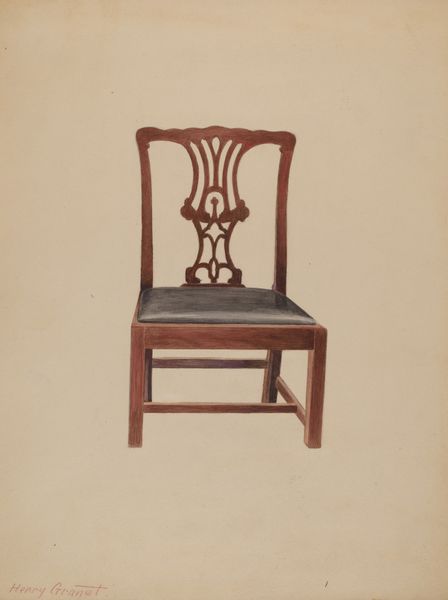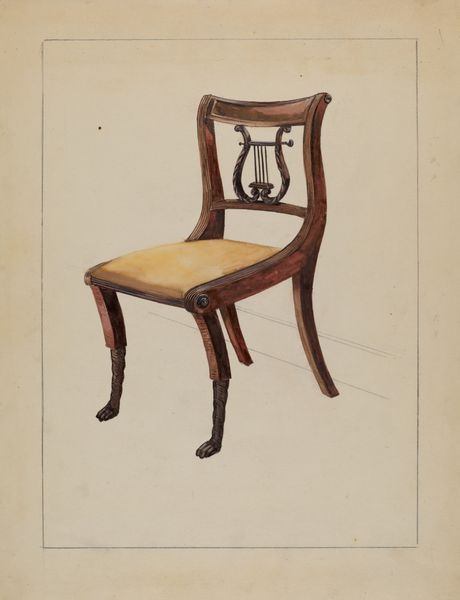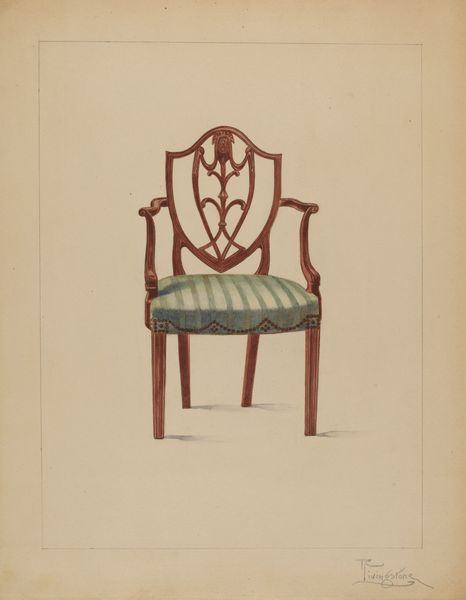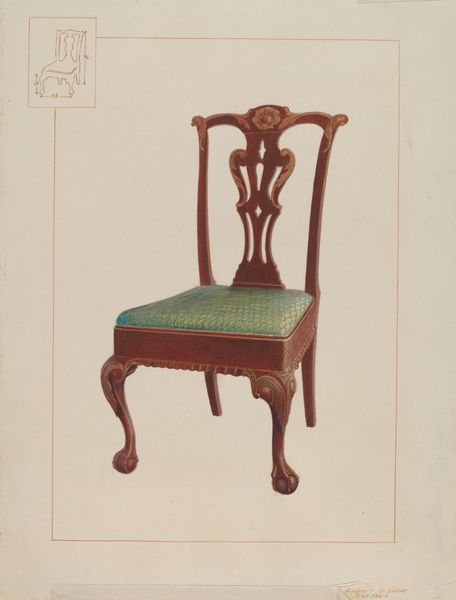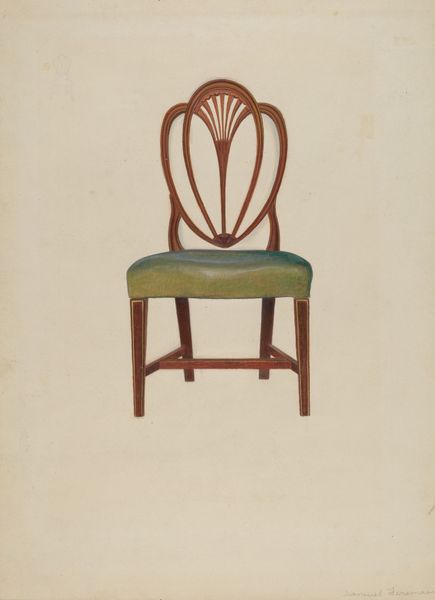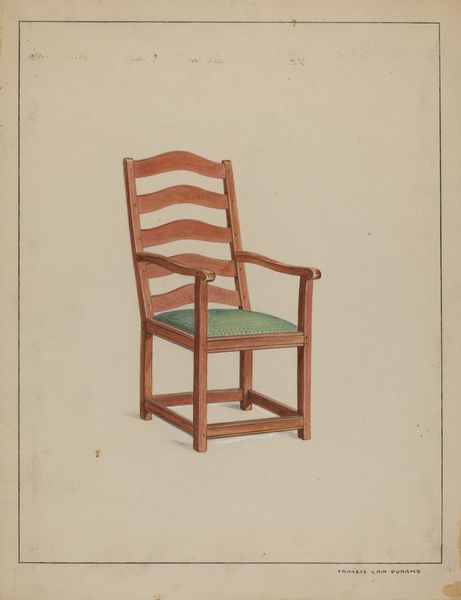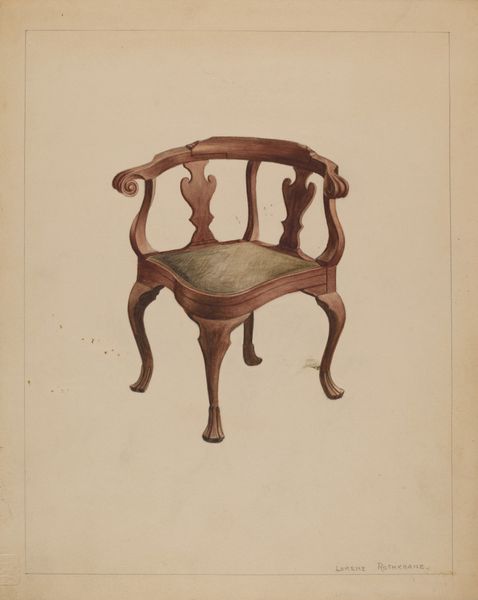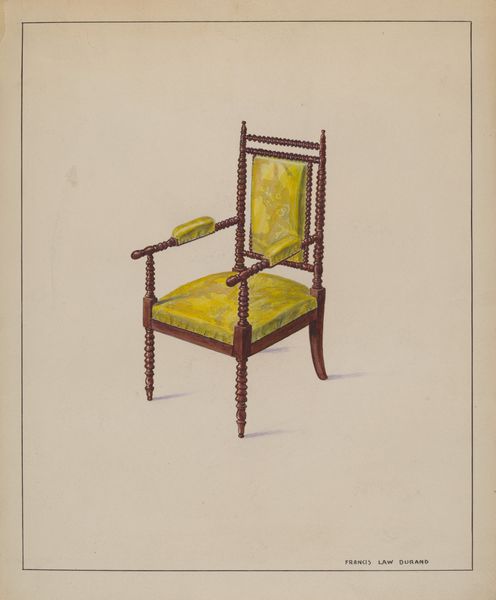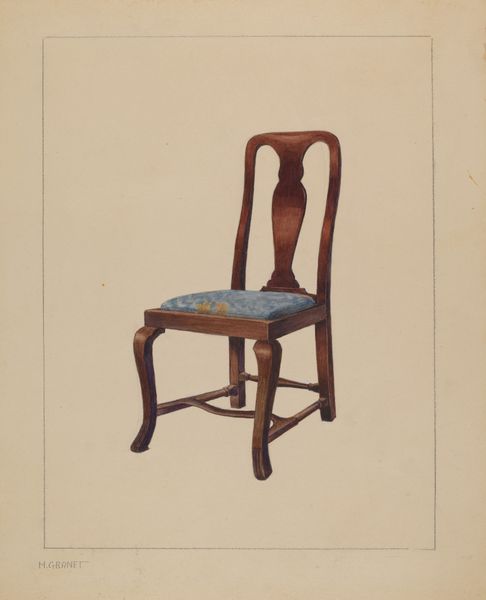
drawing, watercolor
#
drawing
#
watercolor
#
watercolour illustration
#
watercolor
Dimensions: overall: 28 x 22.7 cm (11 x 8 15/16 in.)
Copyright: National Gallery of Art: CC0 1.0
Curator: Here we have Frederick Jackson's "Walnut Chair," likely created between 1935 and 1942. It's a rather charming watercolor and drawing on paper. What strikes you about it initially? Editor: I'm drawn to the austerity of it. The chair seems quite solitary, almost defiant in its plainness. It's reminiscent of the Depression era; a symbol of resourcefulness and simple utility rather than excess. Curator: Exactly! This drawing, with its careful linework and the choice of watercolor, speaks volumes about the prevailing attitudes towards production during that time. No oil paints to mimic textures of a lavish surface here! Editor: Considering the chair's design—the ornate back piece contrasts with the stark, functional legs. Perhaps it points to the societal divisions inherent in design, where only certain classes had access to embellishments. Curator: Precisely. The choice of walnut, although a relatively accessible material, still carried a certain prestige. And look at the way Jackson renders the wood grain. It’s not just representation; it’s a demonstration of skill, connecting the artistry to the craft of furniture making itself. Editor: Indeed. What narratives did this object witness? How many sitters occupied it? Thinking about those lives really personalizes my interaction with a seemingly common household object. Curator: A great question! It also underscores how seemingly utilitarian objects like this chair hold cultural significance beyond their mere function. The labor, the materials, even the stylistic choices… they're all telling a story about society. Editor: It’s more than just a drawing of a chair; it’s a portal to examining our relationship with objects, class, and labor. It really is a quiet yet assertive statement. Curator: I agree. This understated approach makes us pause and reconsider the stories behind even the simplest things around us. Editor: Ultimately, Frederick Jackson invites us to examine what a chair truly means within a particular social, political, and historical landscape.
Comments
No comments
Be the first to comment and join the conversation on the ultimate creative platform.
